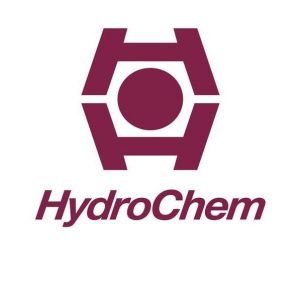Major Methods of Wastewater Treatment
Posted by Hydrochem on March 26th, 2019
It is estimated that every year, millions of people die due to waterborne diseases. A big part of such mortality can be attributed to be indirectly caused by improper sanitation.
Wastewater treatment Australia is a crucial initiative, which has to be taken more seriously for the sake of the health of its citizens. It is a technique through which contaminants are removed from industrial as well as residential wastewater to generate waste stream or solid waste, suitable for re-use or discharge.

Wastewater means any water that has been changed or otherwise impacted by human activities. This includes stagnant rainwater found in roads and streets, sewage from households and enterprises and discharge of polluted water from industries. As such, a major concern is that of wastewater treatment in Australia.
There are different forms of treatment technology for wasteful water, each one being used for specific levels of contamination. Mostly, they are used in combination to make sure that the wastewater is restored to its, natural state as much as possible. Use the services of HydroChem for the best methods.
Some of the strategies of wastewater treatment are:
Solids Removal-
Most solids are removed through simple sedimentation techniques with solids recovered as sludge or slurry. Special problems will be caused by very fine solids, which may need ultrafiltration or flocculation.
Removal of Oil and Grease-
Most oils are removed through skimming devices. Skimmers are cost-effective methods to remove oil before further treatment of wasted water. Skimmers must include powerful heaters to keep the oil in fluid form. But most degraded oils like hydraulic oils will have a soluble, emulsified content which requires further treatment.
Large scale industries like Petroleum industries make use of oil-water separators to separate the oils and suspended solids from their wastewater effluents. Suspended solids settle to the bottom of the separators as a sediment layer, while oil rises to the top and clean wastewater is in the middle. Typically, the oily layer and the sediment layer are removed (skimmed off). The water layer is sent for further treatment.
Biodegradable Organics Removal
The biodegradable organic material of animal or plant origin is treated through extended traditional processes of wastewater treatment like trickling filter or activated sludge. Any content of pesticides, antibiotics or disinfectants can have a damaging impact on water treatment.
Activated sludge is a biochemical process of treating wastewater which uses air (oxygen) and micro-organisms to biologically oxidize organic pollutants, generating a waste sludge.
A trickling filter consists of a bed of gravel, rocks, peat moss or plastic media over which flows the wastewater in a downward direction and contacts a film/ layer of microbial slime covering the bed media. Aerobic conditions encourage adsorption of organic compounds in wastewater by microbial slime layer.
Treatment of Other Organics
Synthetic organic materials such as paints, solvents, pesticides and medicines are difficult to treat, and several methods are used to treat them as per specific components. Methods range from adsorption and incineration to distillation and landfill disposal. Wastewater treatment Australia uses a variety of methods.
Treatment of Alkalis and Acids
Alkalis and acids can be neutralized through controlled conditions. Neutralisation mostly results in a precipitate, which needs treatment as a solid residue, which may also be toxic.
These are the main modes of treatment of wastewater from industrial sources. HydroChem is an Australian company which helps in the treatment of wastewater from the industrial source.



